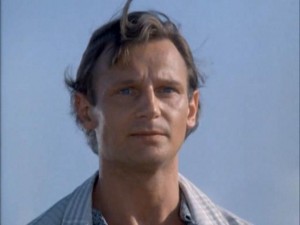American film and television brought a new function for the IRA. Shows such as Hawaii Five-O and Miami Vice utilized the organization as a convenient and captivating subject. Many had heard of the conflict but not many understood it; The Troubles allowed for throwaway, once off references to the IRA that never had to dive any deeper. Viewers could enjoy the intrigue associated with a foreign conflict featuring masked rebels without ever really needing to understand the conflict itself.

“Up the Rebels,” the premiere episode of Hawaii Five-O’s tenth season, is one such case of throwaway use of the IRA. Released in 1977, relatively early in The Troubles, “Up the Rebels” tells the story of the phony Father Daniel Costigan, a smooth talking terrorist trying to smuggle stolen explosives off the island. In a move typical of other IRA depictions in film and television, Costigan’s affiliation is not explicitly stated as with the IRA, but instead as with “a rebel splinter group.” This move appears less than insidious, as the audience can deduce Costigan’s rebel group is the IRA based on the stereotypical and rudimentary understandings of the IRA as Irishmen involved in a bombing campaign. But, as Connelly points out, this move does paint a vivid picture of the predominant American representation of the IRA. In American film, the IRA are conveniently also not the IRA, in a classic move when it comes to foreign portrayals of the IRA. While this splinter structure could perhaps describe the Provos, in 1977 they are in fact the organization most closely associated with the popular conception of the IRA, not the splinter cell extremists in the background such representations envision.

In American TV shows, the IRA are commonly portrayed as suave and charming. They also typically become a romantic interest to add a level of angst and increased drama in addition to their violent actions. You can see this parallel with shows like Hawaii Five-O and Miami Vice where one of the female leads falls for the IRA villain, oblivous to his true nature. American drama often likes to make drastic turns in the paths of the characters to ratchet up the level of tension and the contrast between the romantic and the murderer suits this purpose. It makes the villain seem even worse based on his two-faced persona.
[Home]

One Reply to “Fueling the American Action Obsession”